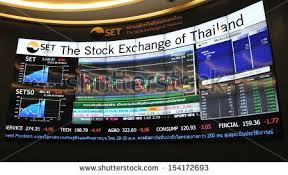Below is excerpt only from today’s edition of macro-strategy commentary courtesy of Rareview Macro LLC publication “Sight Beyond Sight”

Firstly, the Stock Exchange of Thailand SET Index (symbol: SET) is showing the largest negative and the Dollar-Rupiah (USD/IDR) is showing the largest positive risk-adjusted returns across regions and assets.
Of note, Thai stocks fell almost 10% at one point last night and the Indonesian Rupiah weakened by 2% to its lowest level relative to the US Dollar in 16 years. The head of the Thai bourse said no measures were needed to shore up stocks and investors shouldn’t panic and the Indonesia central bank reiterated their view that they will always be in market to stabilize the IDR currency.
Why do we start by highlighting Thai and Indonesian risk assets?
Because South East Asia is the clearest example we have seen of foreign investors pulling out of emerging markets and a prime example of what happens to stocks and currencies when there is a lack of liquidity.
Secondly, the Russian Ruble Basket (symbol: RUBBASK, sum of 0.55 USD/RUB and 0.45 EUR/RUB) is weakening yet again, and with the same speed and degree as last week despite the fact that Brent Crude Oil is showing the largest positive risk-adjusted return in commodities up until ~10:00 a.m. EST.
Last Monday, the probability of a default on the debt of the Russian Federation was ~20%. By the close of business on Friday that jumped all the way up to ~25%. Psychologically, a 1 in 5 probability changed to 1 and 4 likelihood in just five days. That is a big move.
The default probability at the time of writing is ~28.5%, a 3.5% jump since last Friday.
At this point the commentary on what is happening in Russia is fairly chaotic. It includes speculation of 300-500 USD equivalent of currency intervention today and a Reuters article that the central bank has sent an order to the Moscow Exchange to halt trading in certain instruments related to expirations to prevent possible manipulation of the equity futures markets. Whether any of that is true is anyone’s guess.
We are not sure what the market based solution is, or who Van Eck would actually call if the Market Vectors Russia ETF (symbol: RSX) were not allowed to trade one day. All we know is that today’s price action and commentary suggests that last week’s 1% interest rate hike was not enough to stem the outflow of money or provide investors with renewed confidence that this is a “managed FX devaluation”.
Additionally, for those that were around during the late 1990’s, you will remember that losses did not result from banks being the wrong way directionally in existing positioning but from the fluctuations between onshore and offshore cross-currency basis (Hat Tip: GW). The key point here is that volatility is now picking up in cross-currency basis (symbol: RRUSSW2) and that should continue as Russia puts more obstacles in the way of onshore investors looking to remove their money.
Thirdly, as detailed in last Thursday’s edition of Sight Beyond Sight the corporate-driven carry trade in China continues to unwind despite the central bank’s continued attempt to strengthen the currency relative to the US Dollar.
The Dollar-Yuan (USD/CNY) closed at 6.1912 against the U.S. dollar, compared with last Friday’s close of 6.1869. The PBoC fixed the yuan central parity firmer at 6.1152, firmer than last Friday’s 6.1184 and at the strongest level since Feb 20th.
Fourthly, the generic carry trade continues to unwind. While the Dollar relative to the India Rupee (USD/INR) is showing the second largest positive risk-adjusted return in currencies, it is the breadth of Rupee weakness that is striking. For example, INR is also very week relative to the Yen and Euro crosses (EUR/INR and INR/JPY) and, when you take that into consideration along with the fact that India is by far the most consensus long emerging market position that has to be a concern.
While we recognize that further preparations are being made for an interest rate cut following today’s whole sale price data, which came in weaker than expected and mirrored last Friday’s trend lower in the consumer inflation data, the fact is that someone is losing money by being long INR on the crosses today. We’re just glad it is not us.
Finally, the two major oil related currencies – Norwegian Krone (USD/NOK) and Canadian-Dollar (USD/CAD) – are both moving higher in price today. The fact that there is no reprieve despite oil showing some degree of stability, the Libya National Oil Company (NOC) saying its crude production has been disrupted due to insurgent fighting, and workers at Nigerian oil platforms and shipping terminals beginning an indefinite strike over industry reforms, all of which might be expected to be bullish for oil, just highlights that professional investors do not believe a higher range in the “barrel” will quickly follow from stability in the price.
Overall, many of the metrics that most investors and commentators do not look at are showing warning signs or lack of belief in the crude oil or S&P 500 bounce so far.
Expecting the Major Themes to Reinsert Themselves Come Thursday
The above is an excerpt of the 12.15.14 a.m. edition of Sight Beyond Sight, the daily macro-strategy commentary published by global macroeconomic think tank Rareview Macro LLC. Subscription is available on a monthly or annual basis, and group discount rates are available. A 15-day Free Trial subscription is available without need to provide credit card information. For Additional Information, please visit www.rareviewmacro.com

